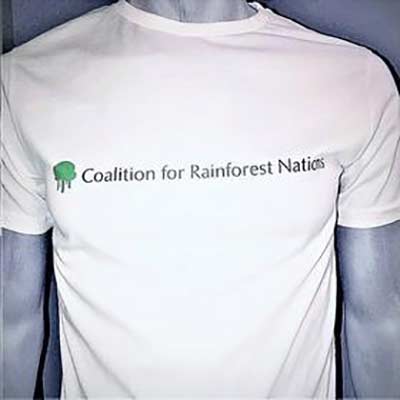Deforestation
Deforestation
One of our planet’s most vital defences against global warming is itself being ravaged by climate change and other causes
What is Deforestation?
Deforestation is happening around the world with all forest types but occurs mostly in tropical areas. Tropical primary forest loss in 2022 totaled 4.1 million hectares, the equivalent of losing 11 football fields of forest every minute. All this forest loss produced 2.7 gigatonnes (Gt) of carbon dioxide emissions, equivalent to India’s annual fossil fuel emissions.
Deforestation means cutting or clearing trees and forests covering a large area, and not replanting them.
Forest degradation is a related term that indicates when a forest is no longer functioning as a healthy ecosystem: A degraded forest can no longer sustain populations the way it used to. For instance, it might not offer enough quality habitat or food to animals. In other words, when a forest is degraded it still exists, but it can no longer function well. It becomes a shell of its former self.
There are four different types of forests worldwide: tropical forests, temperate forests, and boreal forests and plantations.
Intensity of Amazon drought, June to November 2023

In 2023, the Amazon rainforest suffered the worst drought in at least half a century, according to a 2024 study. Rapid deforestation has left it more vulnerable to weather extremes.
Deforestation within the Amazon Basin over a period of 5 years. NASA Earth Observatory images by Lauren Dauphin, using MODIS data from NASA EOSDIS/LANCE and GIBS/Worldview and Landsat data from the U.S. Geological Survey.
Deforestation and the Climate Emergency
Deforestation is a major contributor to global warming and the climate emergency. A mature tree absorbs and stores carbon dioxide – the greenhouse gas we emit from burning fossil fuels, like coal, gas, and oil. These gases cause climate change and lead to a warming in the planet’s temperature. As more forests are destroyed, so too is our ability to trap these greenhouse gases and slow rising temperatures around the world which cause droughts, forest fires, and more frequent hurricanes and typhoons.
Rainforest nations are slowing deforestation based on goodwill and with little financial support. Join our movement.
11 football pitches of forest were lost every minute in 2022, representing a total area of 4.1 million hectares.
11 football pitches of forest were lost every minute in 2022, representing a total area of 4.1 million hectares.
Heavy rainfall and high sunlight quickly damage the topsoil in clearings of the tropical rainforests. In such circumstances, the forest will take much longer to regenerate. The land will not be suitable for agricultural use for quite some time.
Heavy rainfall and high sunlight quickly damage the topsoil in clearings of the tropical rainforests. In such circumstances, the forest will take much longer to regenerate. The land will not be suitable for agricultural use for quite some time.
Other Consequences of Deforestation
Deforestation is a critical environmental concern. The loss of trees and forests can cause desertification, soil erosion, fewer crops, flooding, and a host of other problems:
- Food problems Once deprived of their forest cover, lands rapidly degrade in quality, losing their fertility, and arability
- Exposure of soil to heat and rain Heavy rainfall and high sunlight quickly damage the topsoil in clearings of the tropical rainforests. In such circumstances, the forest will take much longer to regenerate. The land will not be suitable for agricultural use for quite some time.
- Flooding Fertile topsoil is eroded and flooded into the lower regions. Many coastal fisheries and coral reefs suffer from the sedimentation brought on by the flooding. This results in adverse effects on the economic viability of many businesses and damage to the wildlife population.
- Loss of biodiversity through destruction and extinction of many plants and animal species.
- Displacement of indigenous communities The loss of forests threatens some indigenous people’s way of life and survival – as they have to move out of the forests to town and cities.
- Economic loss A forest’s value is often higher when it is left standing than it could be worth when it is harvested as it provides a host of natural services, such as water purification and carbon dioxide storage. It also provides a home to millions of flora and fauna that are the source of ancient and modern medicines.
Rainforest nations are slowing deforestation based on goodwill and with little financial support. Join our movement.
The most common reasons for deforestation are to clear the land for farming and ranches or to cut trees for firewood, paper, and lumber for furniture.
“Even after accounting for ongoing reforestation efforts, deforestation today claims an area close to the size of Greece every year. Achieving a 1.5-degree pathway would mean dramatically slowing this.”
Causes of Deforestation
- Population growth: To meet the demands of a rapidly growing population in developing countries, forests are converted for agricultural lands, new living settlements, and infrastructure-building of roads.
- Mining. The increase of mining for gold and other valuable minerals in tropical forests is furthering damage due to the rising demand and high mineral prices. This causes environmental impacts like soil erosion, the formation of sinkholes, and contamination of soil, groundwater and surface water by chemicals from mining processes.
- Logging or cutting of trees for paper production, firewood, building materials and furniture-making
- Commercial agriculture, such as palm oil which destroy mangrove plantations
- Livestock ranching. Conversion of forests to cattle ranching and deforestation are most vital in Central and South America
In a nutshell, agricultural expansion is the main driver of deforestation in Africa, Latin America, and (Sub)tropical Asia alike. Agriculture is especially responsible for deforestation in Latin America, where it accounts for over 90% of deforestation (whereas in Africa and subtropical Asia, it accounts for 70 – 75%).
An astronaut aboard the International Space Station (ISS) took this photograph of numerous gold prospecting pits in eastern Peru. The pits stand out brilliantly in this image due to the reflected sunlight. The river and the pits cut through the otherwise unbroken Amazon rainforest in Peru’s Madre de Dios state. Nasa Earth Observatory.
Commercial vs. Subsistence Agriculture
The relative impacts of commercial vs. subsistence agriculture vary by continent. In Latin America, commercial agriculture occupies over a 60% proportion of deforestation drivers, while subsistence agriculture is about half that number. In Africa and Asia, meanwhile, subsistence agriculture is a larger driver of deforestation than commercial agriculture.
According to the Union of Concerned Scientists, the majority of tropical deforestation is caused by only four crops in particular: beef, palm oil, soy, and wood products. Of these four, beef cattle are especially linked to deforestation and environmental degradation.
As for forest degradation, causes again vary widely by region. In Africa, collection of fuelwood for charcoal production is the largest driver. In Latin American and subtropical Asia, timber logging is instead the largest contributor.





